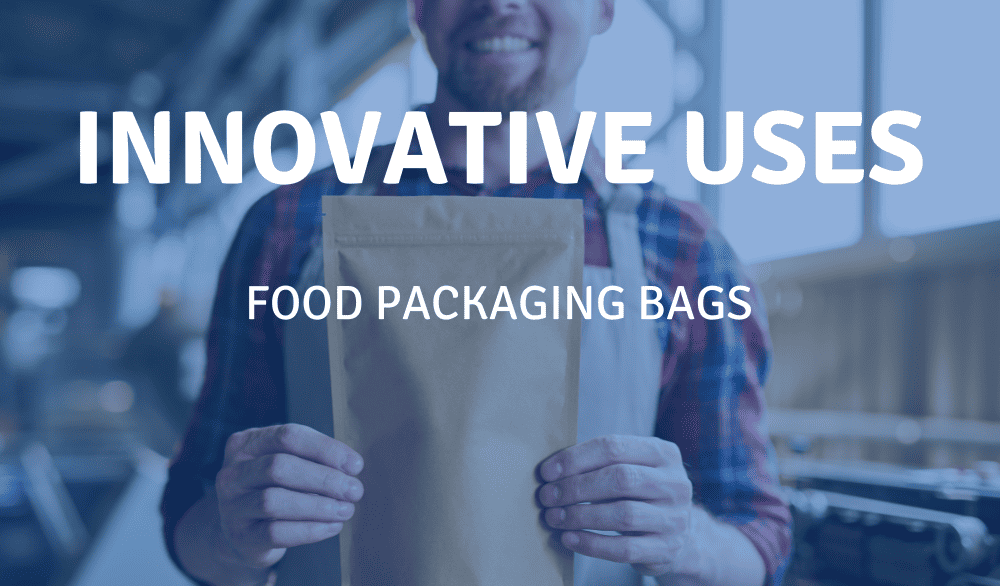Blog
Innovative Uses for Food Bags
Food packaging bags are a versatile staple in most households, primarily known for their role in food storage. However, these humble bags can be used in countless creative and practical applications that go beyond their traditional function. In this blog post, we will explore the inventive ways in which food bags can be employed for organizing, travel, and DIY projects. We’ll provide real-life examples and user-generated content to illustrate these innovative uses, showcasing just how versatile food bags can be. Let’s embark on a journey to discover the hidden potential of these everyday items.
Organizing with Food Packaging Bags
Food bags can be handy tools for staying organized in various aspects of life. Here are some creative uses for food bags in the realm of organization:
Closet Organization:
User Example: Sarah, a fashion enthusiast, uses large, resealable food bags to store her seasonal clothing. She neatly packs away her summer dresses in individual bags, keeping them dust-free and ready for the next year.
Toy Management:
User Example: Thomas, a parent, uses food bags to sort and store his kids’ toys. Small toys like Legos, action figures, and building blocks find a new home in labeled, resealable bags, making cleanup a breeze.
Craft Supplies:
User Example: Emily, an art and craft enthusiast, uses food bags to organize her supplies. She separates her beads, buttons, and small craft materials into clear, resealable bags for easy access and visibility.
Travel Toiletries:
User Example: Mark, a frequent traveler, uses food bags to organize his toiletries. He divides his essentials into quart-sized resealable bags to meet airport security regulations while keeping everything easily accessible.
Food Packaging Bags for Travel
Food bags are not just for storing snacks; they can be incredibly useful when you’re on the go. Here are some creative ways to use food bags for travel:
Packing Medications:
User Example: Lisa, a traveler with health needs, uses small food bags to organize her daily medication doses. This ensures she doesn’t miss a dose and keeps her medication discreet and secure during her travels.
Wet Clothes and Swimsuits:
User Example: Mike, a beach enthusiast, uses food bags to separate wet clothes, swimsuits, and sandy beach towels from the rest of his luggage, preventing them from making everything else damp.
Travel Snack Packs:
User Example: Lucy, a frequent flyer, prepares snack packs in advance by filling food bags with her favorite trail mix, dried fruits, and nuts. These bags help her save money on overpriced airport snacks and stay healthy on the go.
Cable and Charger Storage:
User Example: Alex, a tech-savvy traveler, uses food bags to organize his cables and chargers. He labels each bag with the type of cable and keeps them tangle-free and easily accessible in his backpack.
Creative DIY Projects with Food Bags
Creative DIY Projects with Food Bags
Food packaging bags can be a valuable resource for a wide range of do-it-yourself (DIY) projects. Here are some creative examples of how you can incorporate food bags into your next DIY endeavor:
Homemade Ice Packs:
User Example: Jennifer, a resourceful mom, makes homemade ice packs by filling food bags with a mixture of water and rubbing alcohol. These DIY ice packs are flexible, reusable, and perfect for soothing bumps and bruises.
Flower Press:
User Example: David, a nature enthusiast, repurposes food bags to create a flower press. He places freshly picked flowers between layers of paper and food bags, then uses heavy books to press and dry the blossoms.
Homemade Piping Bags:
User Example: Maria, a baking enthusiast, makes her own piping bags for decorating cakes and cupcakes. She cuts a small corner of a food bag and inserts a decorating tip, allowing her to create intricate designs.
Seed Storage:
User Example: George, a gardening enthusiast, uses food bags to store seeds. He collects seeds from his garden and places them in labeled bags, keeping them dry and organized until the next planting season.
Environmental Considerations
While food bags are versatile and convenient, it’s essential to consider their environmental impact. Many traditional food bags are made of single-use plastics that contribute to pollution and landfill waste. To minimize the environmental footprint, consider using eco-friendly alternatives such as biodegradable or compostable bags. Additionally, make an effort to reuse food bags whenever possible to extend their lifespan.
Food bags are far more versatile than we often realize, serving as invaluable tools for organization, travel, and DIY projects. From closet organization to homemade ice packs and beyond, their potential extends well beyond their conventional use for food storage. Real-life examples and user-generated content illustrate the countless innovative ways in which food bags can make our lives more organized, efficient, and creative.
As you explore these creative uses for food bags, remember to be mindful of the environmental impact. Opt for eco-friendly options whenever possible and strive to reuse food bags to reduce waste. By embracing the versatility of food bags, you can enhance your daily life while contributing to a more sustainable future. These unassuming bags might just become your new favorite multitasking tools, ready to assist you in any situation.





